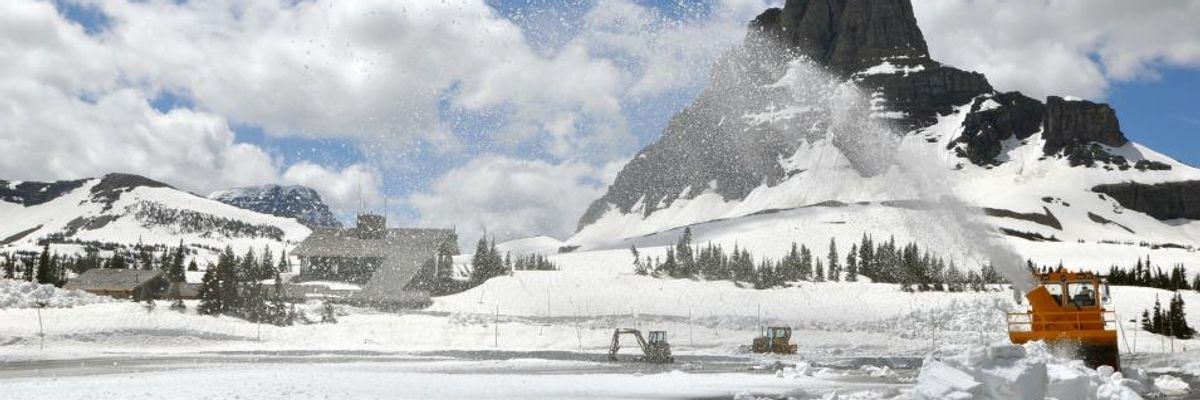Vast areas of the northern hemisphere that are home to nearly two billion people face dangerous water shortages due to shrinking snowpacks, according to a new study released Thursday.
Less snowfall and earlier melting over the next century, coupled with the current trajectory of greenhouse gas emissions, means that people living in nearly a hundred watershed basins worldwide which rely on melting snow for water supply face a 67 percent chance of decline by 2060. That figure remains true even if present demand does not increase.
"Snow is important because it forms its own reservoir," said lead author Justin Mankin of Columbia University. "But the consequences of reduced snowpack are not the same for all places--it is also a function of where and when people demand water. Water managers in a lot of places may need to prepare for a world where the snow reservoir no longer exists."
The most at-risk basins lie in the American West and South, southern Europe, the Middle East, and central Asia, according to the report, published in Environmental Research Letters.
Using two sets of climate models, the team of U.S. and European researchers predicted future changes in snow and rain runoffs. For basins in the Duero-Adour in northern Portugal and Spain, the Central Apennines in Italy, and the Rio Grande in Texas and Mexico, which are dependent on snow, the findings showed water declines even in best-case scenarios.
But even basins that meet their water demand through rainfall are at risk.
Climate change "also shifts an additional 68 basins to have spring and summer rainfall runoff that is insufficient to meet human water demand, even without accounting for increases in demand that are likely to arise from population growth and economic development," the report states.
According to Mankin, those factors are harder to estimate.
"We only consider changes in climate, but an even larger source of uncertainty is people and how their consumptive patterns will change," Mankin said. "We know populations will increase and that demand will as well, but that technological and management changes could offset at least some of these increases. So there is some capacity to adapt, but that capacity is going to be different for different places."
Moreover, declining snowpacks could lead to drier forests, which in turn would face an increased fire risk during summer seasons. Food supply for birds could also decrease, while cold-water fish like trout would also face environmental threats.
"We did not know where snow was critical to supplying water for people and thus where people are most likely to be sensitive to projected snow changes," said Mankin. "Many of the basins that are currently snow-dependent have large risks of declines in snow's future potential to supply current demands given both changes in rainfall and snowpack."
